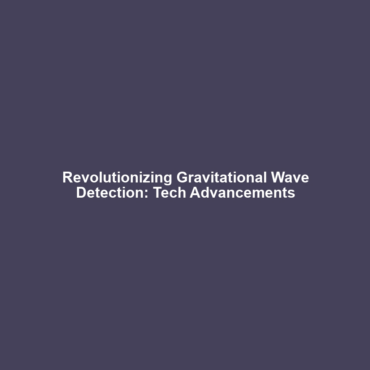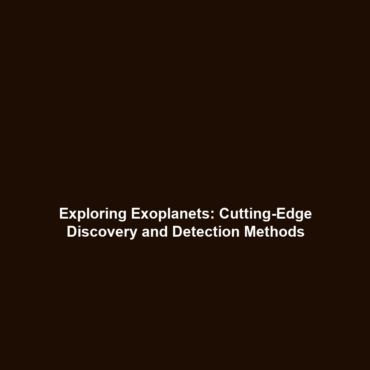Current Technological Advancements Aimed at Improving Detection Sensitivity of Gravitational Waves
Introduction
Gravitational waves, ripples in spacetime caused by some of the universe’s most violent astrophysical events, have dramatically changed our understanding of the cosmos. Recent technological advancements aimed at improving detection sensitivity are pivotal, enhancing our ability to observe these elusive waves and unlocking further secrets of the universe. This article explores the significant strides being made in gravitational wave detection technology, their relevance, and implications for astrophysics.
Key Concepts
Understanding Gravitational Waves
Gravitational waves were first predicted by Albert Einstein in 1916 as part of his General Theory of Relativity. Their detection provides insights into phenomena such as black hole mergers and neutron star collisions, which are fundamental to modern astrophysics.
Advancements in Detection Technology
Recent advancements include:
- Laser Interferometer Gravitational-Wave Observatory (LIGO): The enhancement of LIGO’s laser systems and photodetectors has resulted in increased sensitivity.
- Advanced Virgo: Increased sensitivity from upgrades in optical components and vibration isolation systems.
- KAGRA: A suspended mirror design that mitigates seismic noise, leading to higher detection capabilities.
Applications and Real-World Uses
The application of these technological advancements in gravitational waves includes:
- Astrophysics Research: Improved detection sensitivity allows for deeper exploration of cosmic events, leading to new discoveries.
- Multi-Messenger Astronomy: Collaborations with electromagnetic observations to provide a more comprehensive picture of cosmic phenomena.
- Foundation for Future Studies: Enhanced technologies serve as a stepping stone for future observatories like the Einstein Telescope.
Current Challenges
While advancements are promising, several challenges remain:
- Noise Management: Environmental and quantum noise still pose significant challenges to detection systems.
- Funding and Resources: Securing long-term funding for instrument upgrades and new projects is critical.
- Technical Complexity: The sophistication of current technologies also complicates maintenance and troubleshooting.
Future Research and Innovations
Looking ahead, future research in gravitational wave detection technology focuses on:
- Next-Generation Detectors: Projects like the space-based LISA (Laser Interferometer Space Antenna) aim to open new observational windows.
- Improved Noise Reduction Techniques: Innovations in material science may lead to better vibration isolation and quieter sensors.
- Quantum Technologies: Utilization of quantum sensors to enhance measurements beyond classical limits.
Conclusion
Technological advancements aimed at improving detection sensitivity are crucial for the field of gravitational waves, promising to enhance our understanding of the universe significantly. As we continue to innovate and explore, the future of gravitational wave astronomy looks bright. For further reading, explore related topics such as Gravitational Waves Overview or The Future of Astrophysics.






